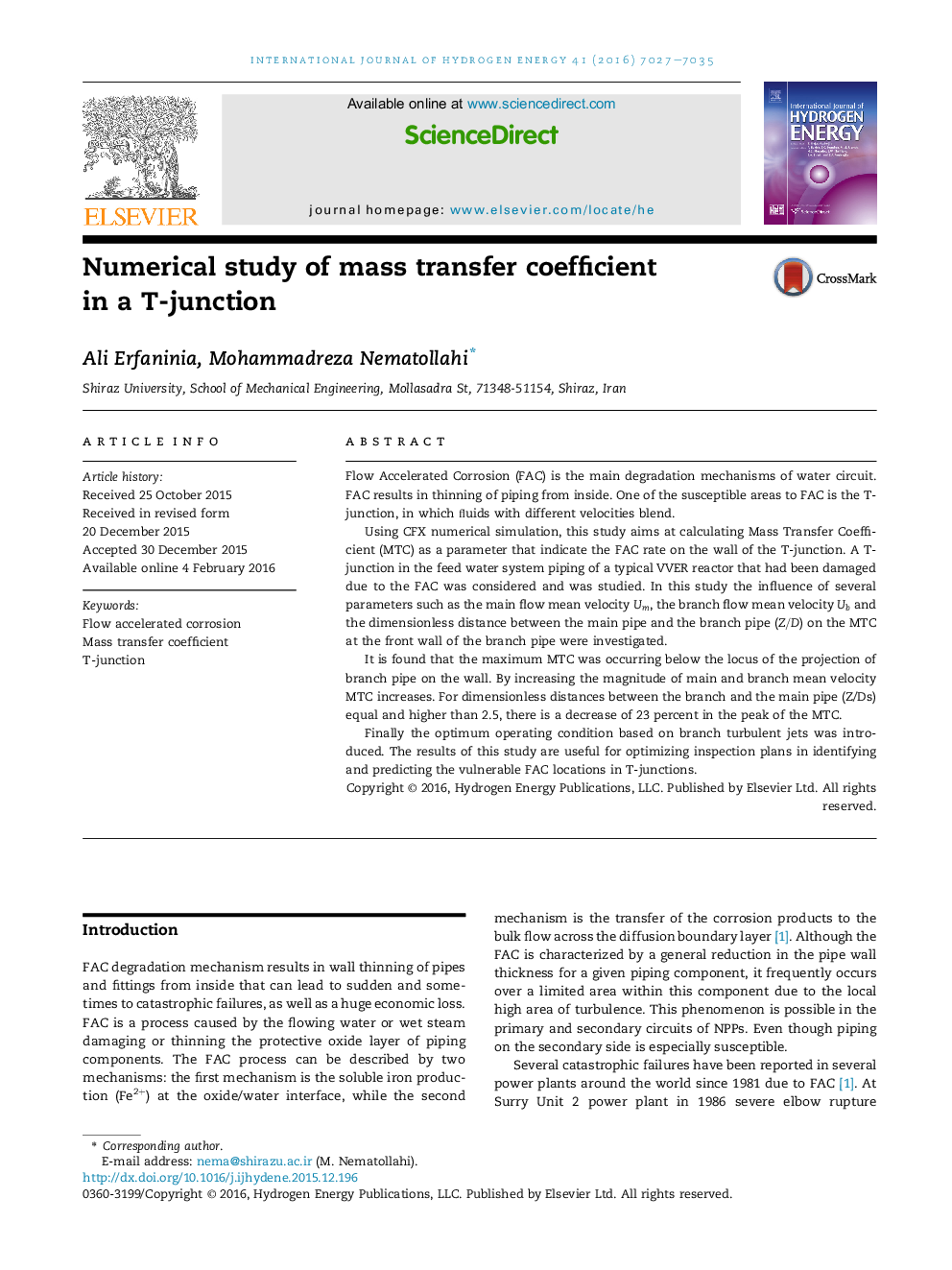| Article ID | Journal | Published Year | Pages | File Type |
|---|---|---|---|---|
| 1277443 | International Journal of Hydrogen Energy | 2016 | 9 Pages |
•Mass Transfer Coefficient (MTC) was studied on the wall of a T-junction.•The influence of the main and branch flow mean velocity were investigated.•The effect of the distance between the main and the branch pipe was investigated.•By increasing the magnitude of main and branch mean velocity MTC increases.•For Z/Ds higher than 2.5, there is a decrease of 23 percent in the peak of the MTC.
Flow Accelerated Corrosion (FAC) is the main degradation mechanisms of water circuit. FAC results in thinning of piping from inside. One of the susceptible areas to FAC is the T-junction, in which fluids with different velocities blend.Using CFX numerical simulation, this study aims at calculating Mass Transfer Coefficient (MTC) as a parameter that indicate the FAC rate on the wall of the T-junction. A T-junction in the feed water system piping of a typical VVER reactor that had been damaged due to the FAC was considered and was studied. In this study the influence of several parameters such as the main flow mean velocity UmUm, the branch flow mean velocity UbUb and the dimensionless distance between the main pipe and the branch pipe (Z/DZ/D) on the MTC at the front wall of the branch pipe were investigated.It is found that the maximum MTC was occurring below the locus of the projection of branch pipe on the wall. By increasing the magnitude of main and branch mean velocity MTC increases. For dimensionless distances between the branch and the main pipe (Z/Ds) equal and higher than 2.5, there is a decrease of 23 percent in the peak of the MTC.Finally the optimum operating condition based on branch turbulent jets was introduced. The results of this study are useful for optimizing inspection plans in identifying and predicting the vulnerable FAC locations in T-junctions.
